Eager to know the signs baby will have curly hair? Join the club. Like most parents, you likely want to know whether or not your baby will have mama’s eyes, daddy’s height, or grandma’s love for music. In the same way, knowing your baby’s hair type is sometimes easy to predict, while at other times, it can remain a bit of a mystery. Today, we’ll be delving into what clues you might have as to what type of hair your baby will have when older, as well as what you can do to manage the hair if it does indeed become curly.
When Did Your Baby’s Hair Start to Curl?
My daughter was born with a full head of hair. The nurses were all crowded around her at birth oohing and aahing over the fullness of her hair. Her hair was only slightly wavy at the time, even after being washed.
However, as time went on (and with every subsequent wash) her curls grew tighter and tighter. By the time she was around 3-4 weeks old, my daughter had tight kinky curls when she started with soft silky waves.
As you can see, the change in curl pattern can happen quite quickly. But this may not be the case for every baby.
Some babies may see curly locks within weeks – as was the case with my daughter – while others may not see it until they are 24 months of age! It really depends on the baby, genetics, and other factors.
But more on that later.
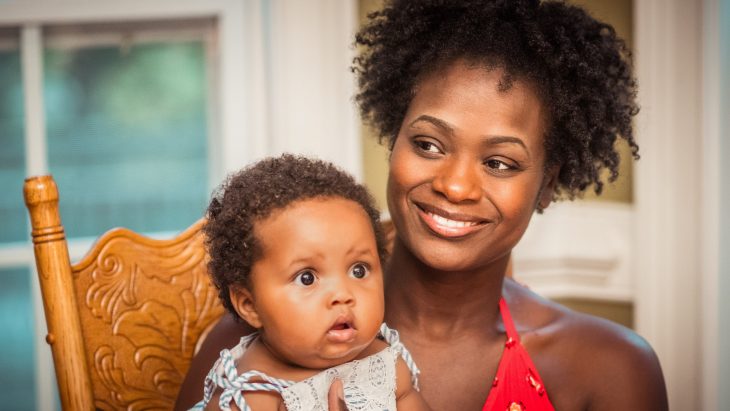
Can Newborns Have Curly Hair?
Newborn With Curly Hair
Yes, newborns can have curly hair but it is very rare that they come out of the womb this way.
Typically, baby hair is wavy, at best, when exiting the womb. It isn’t until it comes in contact with water and a few days or weeks pass by (or maybe even a year or two) before you’ll see their true curl pattern come out.
To add to the confusion, most babies end up shedding the hair they were born with and regrowing hair in its stead almost immediately. This new hair may have its own look and texture different from what they were born with.
And some babies may be born with little to no hair at all!
No matter what is the case, a baby will generally have his or her true hair color and texture by age 2. Though even this isn’t set in stone.
Still, while curly newborn hair is possible, it ain’t like that baby will have curly hair from Day 1. Even babies that end up with the tightest and kinkiest of curls may be born with straighter, silkier, and smoother locks that eventually turn into loose or tight curls as time goes on.
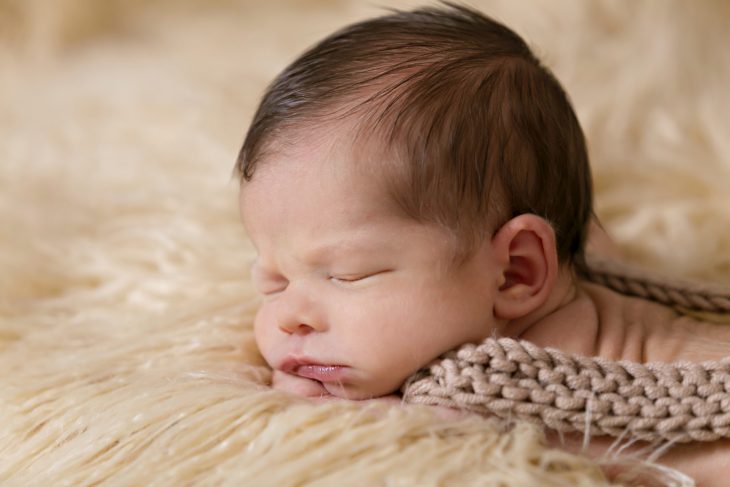
Baby Hair Texture Predictor: Top Ten Signs of Curly Hair in Babies
What Are Signs of Having Curly Hair?
There are many ways to predict whether or not your baby will have curly hair. We’ve given some of the most clear-cut signs in subsequent segments. These ten signs are sure to point you to your answer for whether or not your baby will have curly hair, with some giving you an indication even before birth.
So, without further ado, let’s get started.
Will My Baby’s Hair Turn Curly?
There are a few ways you can determine if your baby’s hair will eventually turn curly. They include the following:
Genetics
Remember that when speaking of genetics and hair follicles, we aren’t simply talking about the baby’s parents. Grandparents, and even great-grandparents, can play a role in how your child’s hair may turn out. If mom, dad, gram, or grandpa have curly locks then it is possible that your child’s hair may come out curly too.
Does mom have straight hair, dad have curly hair or vice versa? If so, then it is a roll of the die as to which your baby will have.
Do both parents have straight hair? Don’t be surprised if your baby’s hair is bone straight or even if it still becomes curly! Even parents with straight ahi can give birth to a curly-haired baby. The baby may be inheriting its curls from someone else in the family. This is often to the delight of the parents, and even more so to the person in the family whose hair they are taking after!
Waves At Birth
As previously mentioned, my daughter had a full head of waves, not curls, at birth. She now has coarse and tightly coiled tresses. The same can happen to your child. A baby that is born with delightfully wavy locks that sometimes resemble a hundred little cowlicks is a strong indicator that your baby’s hair will eventually turn curly. Sometimes, the locks will grow curlier and curlier as the weeks go on, but sometimes it may take a while for you to see those curls really begin to tighten up. It really just depends on the baby and genetics.
Baby Hair Curly When Wet
Sometimes babies are born with hair that appears straight at first but that curls when it comes in contact with water or other forms of moisture. If you notice that when you wash your baby’s hair or when it becomes soaked in water that it begins to curl up, then you can expect your baby’s hair to be curly. The reason that your baby’s hair can sometimes appear straight rather than curly at first is that the curls may be a bit dehydrated. When they come in contact with moisture the child’s true texture and curl pattern emerges, thus giving you an idea of whether or not the child’s hair is actually curly or straight.
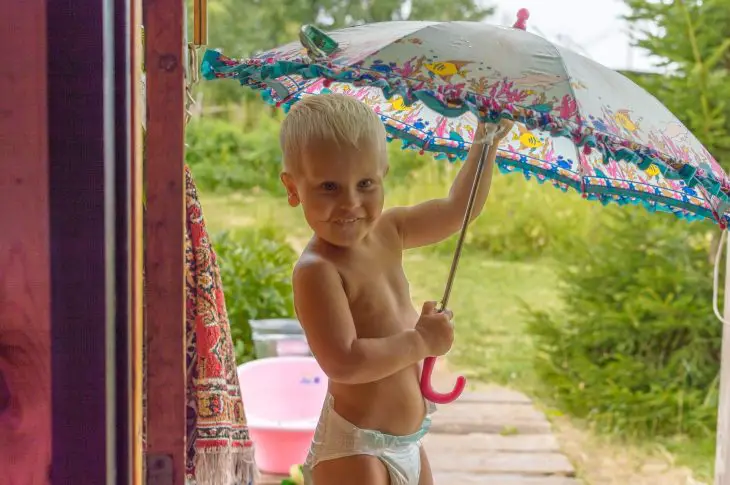
“Loopy” Hair
Does your child’s hair tend to dry in a loop ( or several loops) after being wet? This is yet another sign that your little one will end up with curly hair. It may also be easy to brush into loops if you take the hair and brush it around your finger. Hair that holds a curl when brushed or that dries in a loop is typically curly hair that may not yet have blossomed into the spiral curls or tight coils that it is destined to be.
Fuzzy or Frizzy Hair
If you notice that your baby is born with hair that appears frizzy, fuzzy, and has little to no definition, it could be that your baby’s hair is (or will be) curly. This fuzz is often fine hair that is sprawled out all over your baby’s hair that will eventually grow out into curly locks. To know for sure, try wetting a section of the hair, then look closely. If you see little ringlets or signs of waving after wet, then it is true that your baby has curly hair.
Environment
Believe it or not, the environment can often play a role in how curly your baby’s hair looks. While the environment may not fully dictate a baby’s hair type the way that genetics due, factors such as the amount of moisture in the environment and whether the climate is consistently hot or cold can determine just how frizzy or curly your baby’s hair will appear. In fact, the warmer the climate is the more curly, frizzy, or wavy a baby’s hair may appear. The colder it is, especially in climates with low humidity, the straighter or less frizzy your child’s hair may appear.
Heartburn
This one may surprise you (or it may confirm everything your grandmother once told you), but yes, it is true that heartburn during pregnancy and curly hair are closely related. Scientists have found that despite the popular belief that it is the hair itself that is causing heartburn, the more likely scenario is that it is the hormones that cause the hair to grow that are the culprits of mama’s heartburn woes. Whatever the cause, if you notice that you begin to experience frequent discomfort during pregnancy as a result of unwanted heartburn, chances are that you could be looking at a curly mane within only a few weeks of your baby’s birth–especially if you and your spouse have curly hair, too!
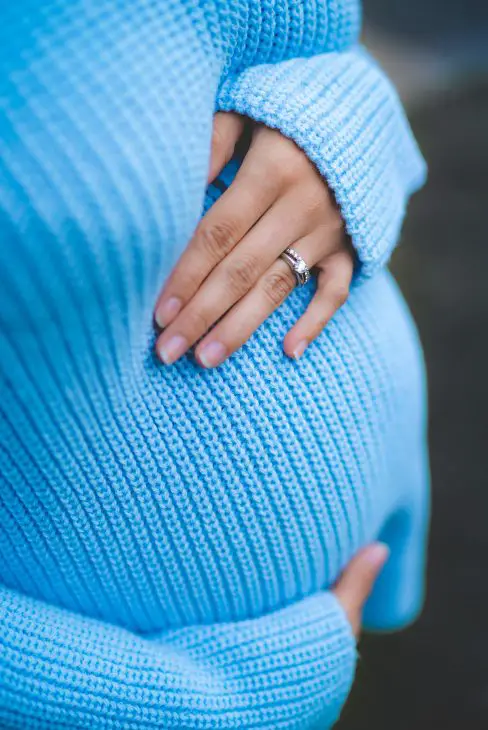
Look at the Hairline
A baby’s hairline is like a window into your baby’s hair growth pattern. Indeed, the hairline is a very telling sign that your baby will have curly hair. If your baby has a few loops here and there that make you wonder, or if he or she is born with wavy hair but you wonder if the hair will grow any tighter, it can sometimes help to look at the hairline to get your answer. These shorter, wispy pieces of hair can tell you all you need to know because they often curl up, especially when exposed to moisture. This is even true for curly-haired adults…once they have their hair straightened, it is often their roots and hairline that go curly first when exposed to moisture in the environment.
Parting Woes
Have you noticed that your baby’s hair is exceedingly difficult to part? If so, you likely know that your child’s hair is curly (or is on its way to getting there)! A curly-haired child may not have hair that is very manageable, and it may take practice and patience to get the parting and sectioning just right. Rather than fuss with it, you can choose to leave your baby’s hair loose or in one single ponytail until he or she is able to sit still long enough for you to get the parting the way you would like it.
Wait It Out
Combining all of the aforementioned signs, you sometimes just have to wait it out to see if your predictions are correct. If you experienced heartburn during pregnancy, see waves in your baby’s hair or along the hairline, notice that your baby’s hair curls when wet, and you know that there are at least a few people in the family with curly Q’s, then only time will tell whether or not your suspicions are correct when it comes to predicting your child’s hair texture. Give it some time and see what becomes of your baby’s hair as you wait it out.
When Does Baby Hair Texture Change?
A baby’s hair texture can change at any time after birth. For some babies, it will change within a few weeks. For others, maybe a few months. Even for others, it may take up to a year or two for a baby’s true hair texture to show. Whatever the case, a baby generally has the locks that he or she is going to stick with by the age of two or three.
When Do Babies Hair Start to Curl?
It’s hard to say when your baby’s hair will start to curl because every baby is different. Just like with texture change, baby hair curling could take as little as a few weeks to a few years. It really depends on genetics. Many parents notice a change about 5-7 months old, but plenty of parents are waiting much longer to see their child’s true curl pattern. So, unfortunately, you’ll just have to wait and see!
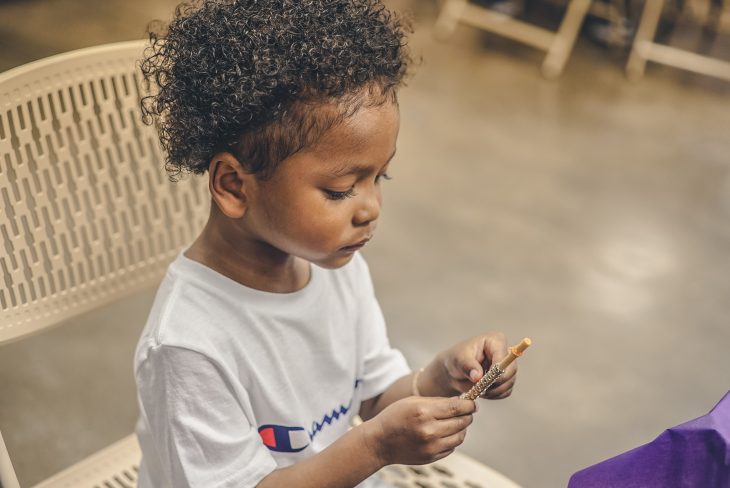
Baby Curls vs Real Curls
According to hairstyling experts, one way to know for sure if your baby’s hair is curly hair or if they simply have baby curls is to look at the roots.
If the hair is curly even from the roots, then your baby or toddler has “real” curls. If the hair is straight at the roots, your baby most likely has straight hair and the curls you see now are simply “baby” curls.
Baby Born With Straight Hair Will It Change?
Yes! It is completely possible for a baby to be born with straight hair and for it later to become curly. This is especially true when your baby begins to shed the hair they were born with over time.
When new hair comes in, it may be a different texture, curl pattern, and possibly even a different color than before!
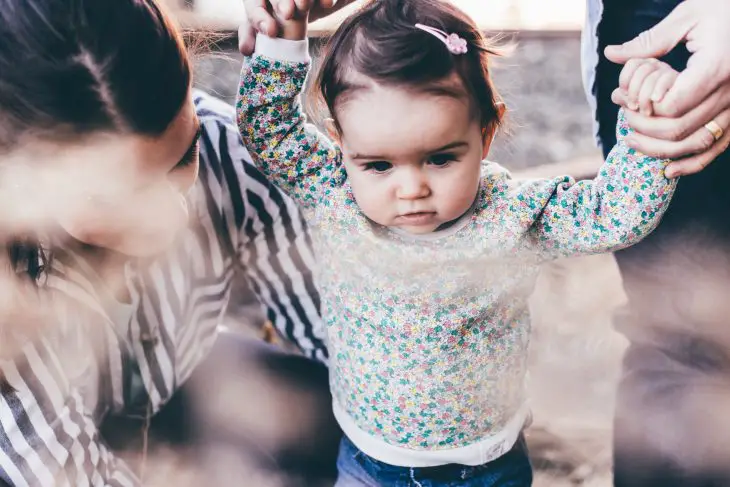
At What Age Will I Know If My Baby Will Have Curly Hair?
It’s impossible to tell at what exact age your baby will see his or her curly hair…if ever! Whether your baby will have curly locks or straight will depend on genetics, though many parents see signs of their baby’s hair curling within the first year or two of life.
In fact, I’ve even heard stories of people whose hair was bone straight until they hit puberty, at which point, their hair started to curl! Therefore, it is very hard to say when exactly you’ll see your baby’s curls as it is different for every child.
Will My Baby’s Hair Stay Curly?
I’ll start with the good news first, and that is that if your baby was born with curly hair, he or she is likely to keep the curly hair, especially if it’s growing in curly at the roots.
Having said that, if your baby’s hair appears straight at the roots, then it is likely that the curls will leave once you decide to cut your baby’s hair.
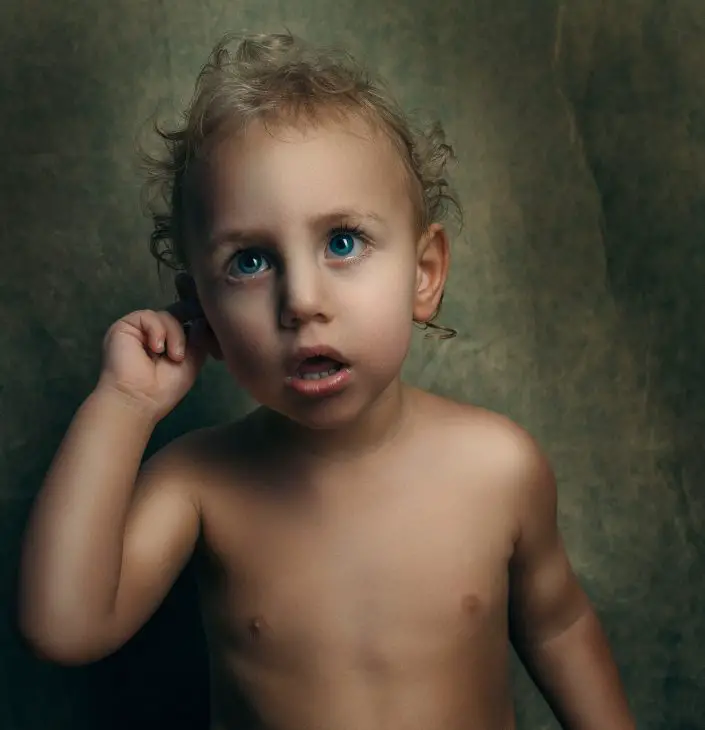
Curly Hair Care Tips
If your baby has curls and you desire to keep them in the best shape, consider the following tips:
- Use plenty of oils and moisture to keep them hydrated
- Use a silk pillowcase or bonnet to keep hair from frizzing
- Use styling products made specifically for your child’s hair type ( if you’re having trouble getting your child’s curls to grow, you may need to seek out specific toddler hair growth products)
- Avoid harsh shampoos and hair products
- Avoid drying shampoos and hair products (these encourage frizz)
Knowing The Signs Baby Will Have Curly Hair Is Fairly Simple!
Knowing the signs of whether or not your baby will have curly hair is relatively simple. If your baby’s hair curls all the way to the roots, you’ll know their hair is curly for sure. If it only curls at the ends but grows in straight, chances are that the curls will be lost after the first haircut.
Pay special attention to genetics and how the hair looks when it is wet to further feed your curiosity. Most people will see the true curl pattern emerge at age 2 or 3, however, it can take even until puberty in some cases for true curls to shine through.
Signs baby will have curly hair – FAQs
Yes, curly hair does tend to be the dominant gene trait.
Yes! A baby can have curly hair if the parent doesn’t because the child may be getting their curly hair passed down from the genes of a distant relative.
Not necessarily. Some African-American babies are born with straight or wavy hair. It develops its texture and curl pattern over time.
Not all babies have straight hair when they are born. Some babies are born with waves or loosely curled hair at birth.
Curly hair genes are considered dominant and may express themselves even if the child has parents with straight hair. Curly hair genes can come as a surprise or can be totally expected due to the hair types of their parents.

Leave a Reply